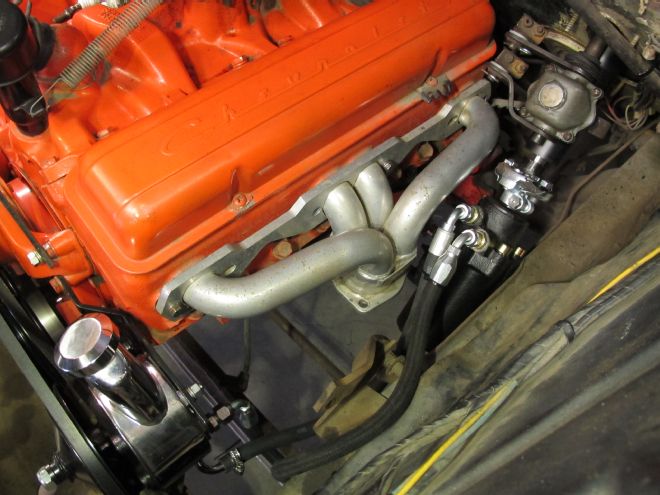
Power steering and I-beam axles haven't always gone hand in hand, to say the least. And for quite some time, most owners had to resort to Toyota-based conversion configurations (or, the power assist "add-on" deal) in order to make one hand go with the other when it came to Task Force-era ('55 second-series to 1959) Chevy trucks. Most people have a choice now— a better choice at that. And that choice is "not" resorting to a rack-and-pinion system.
Classic Performance Products recently expanded its 400 Series power steering box applications to include a specific conversion kit for '55-'59 GM ½-ton trucks. Designed as a bolt-in replacement, a precision-made framerail bracket mounts the box in the factory location, placing the input shaft in line with the steering column shaft, as well as allowing the provided CPP Pitman arm to clock/travel as the stock one. No steering geometry or linkage is affected, as it utilizes the stock draglink and tie rod. The only modification necessary, if the end user so chooses to go this route, is adapting the existing steering column; the alternative being to go with an aftermarket column altogether.
The benefits, obviously, are modern power-assist for your once-sluggish, bicep-building steering efforts, as well as an improved turning ratio (13.6:1 versus the manual box's 24:1). The installation is very straightforward — just three bolts, a Pitman arm, and linkage hookup — the main time-consumer being the optional steering column conversion. Naturally, you'll also need to incorporate the appropriate source of fluid supply, for which we previously covered with CPP's integrated power steering pump/V-8 engine mount bracket install.
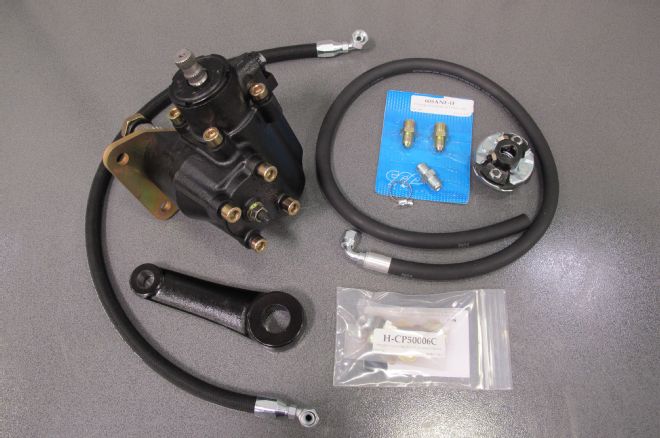
01 Classic Performance Products complete power steering conversion kit (CPP5559PSK-OC) for '55-'59 Chevys includes everything behind the previously installed pump/bracket back to the bottom of the column: 400 Series power steering box with appropriate mini rag joint, plumbing/fittings, and pitman arm.
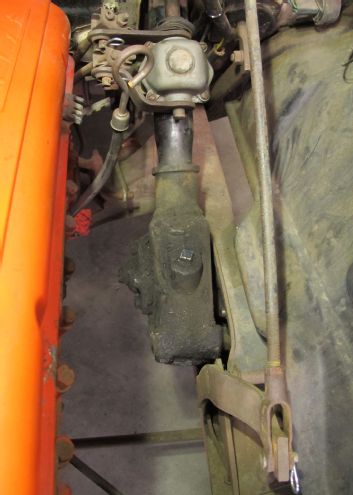
02 You have choices, pertaining to steering column options, when using a 400 Series conversion kit: aftermarket (obviously), stock automatic, and stock manual. Best part about retaining a three-on-the-tree column — you can also still retain the stock shift linkage mechanisms, as you'll see.
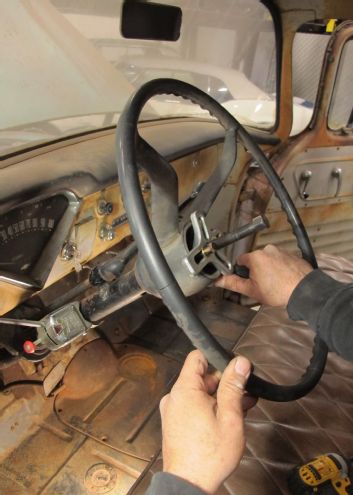
03 The stock steering column can be removed in one piece if space permits below the truck. Undo everything from inside the cab first (steering wheel, shifter, column drop, floor plate, etc.). For future reference sake, take note and mark steering wheel and column placement (on the drop); measure from the very bottom end of the column tube to the mast jacket, as well as the amount of tube stick out from the floor plate up.
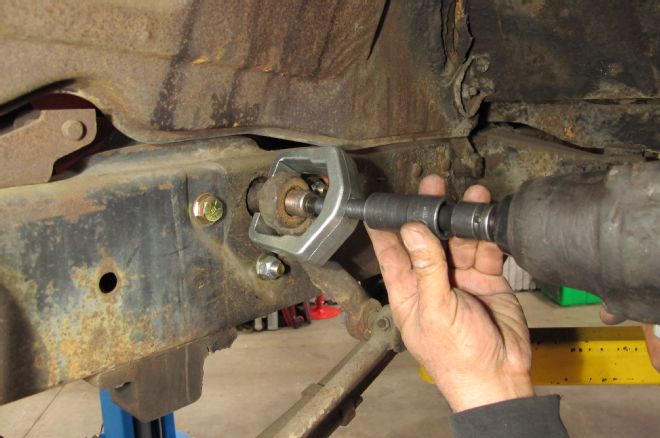
04 Then, after disconnecting and carefully removing the lower shift linkage mechanism, pull the stock Pitman arm.
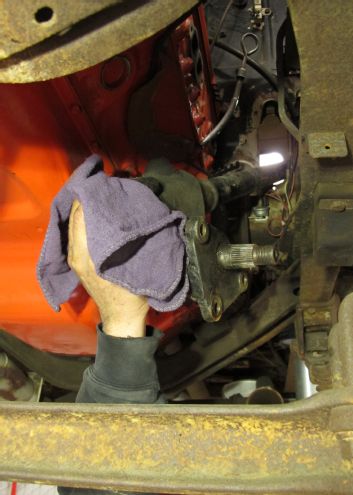
05 Remove the three through-frame bolts holding the stock box in place, and the unit is free to be relieved of service. (If space doesn't permit, you can also cut the column from the box while everything's still mounted.)
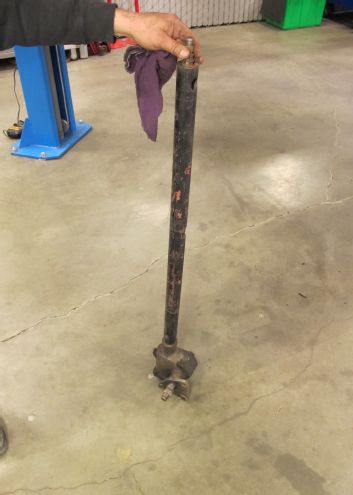
06 We'll be reusing the column and inner steering shaft, so we need to separate them from the old box, which can either be done by disassembling the box itself, or...
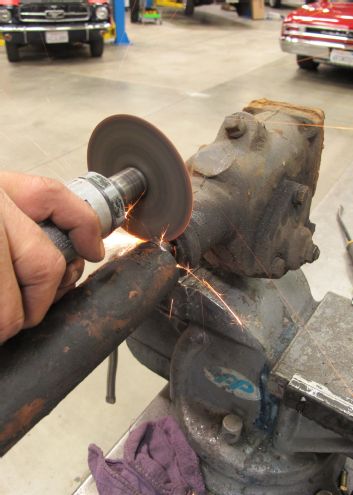
07 ...severing shaft/tube from the steering box, as such. To ensure there's sufficient material to work with — and seeing as which the steering gear will now be useless — both are cut flush at the top of the box.
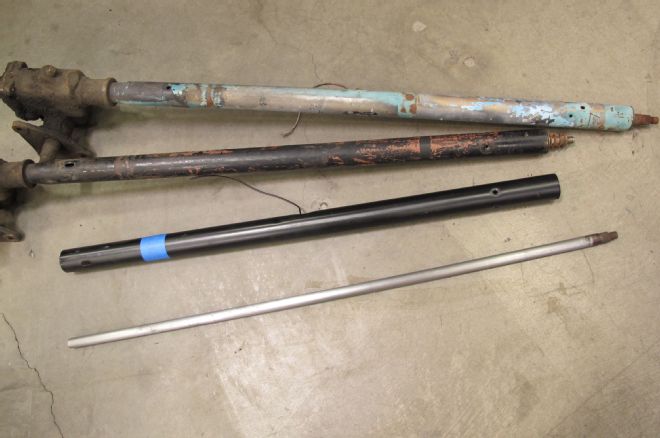
08 There are two lengths of OE '55-'59 three-speed columns: long ('55-'56, flat steering wheel) and short ('57-'59 dished wheel). Since GM placed both steering wheels rather high in the driver's personal space, we'll take the opportunity to accordingly adjust that when we modify the tube/shaft.
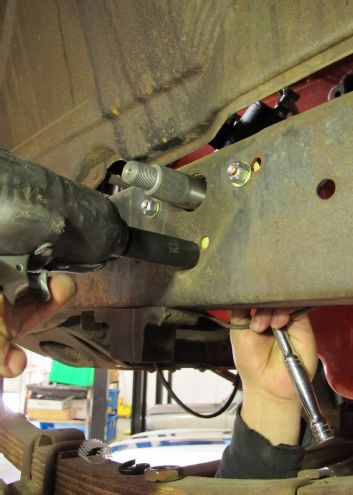
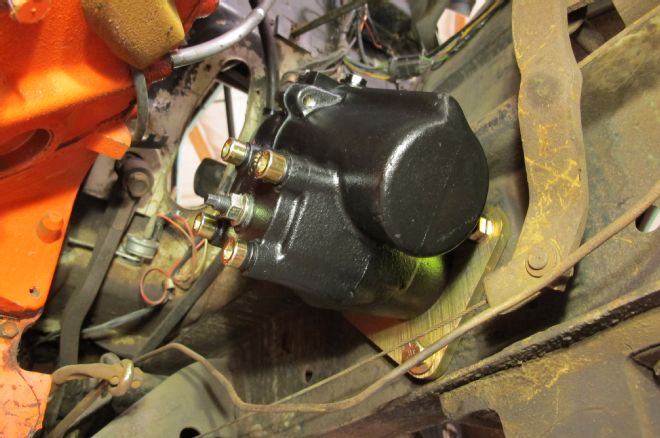
09-10 First, let's get the easy part out of the way — mounting the CPP 400 Series box. Using the provided Grade 8 hardware and bracket, simply bolt the box to the existing three holes in the framerail.
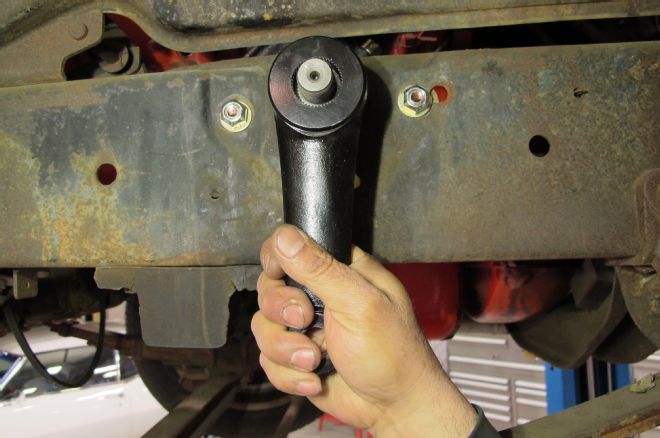
11 Now, using the new CPP Pitman arm (splines on the 400 box differ from OE, hence the reason we're not using the old Pitman), center the output shaft on the box.
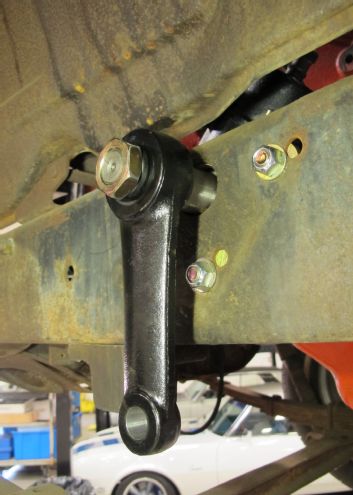
12 After centering the box and mounting the Pitman, verify clearance with the lower of the three bolts — if clearance is an issue (uncommon), simply flip the bolt around so lock nut faces the inside.
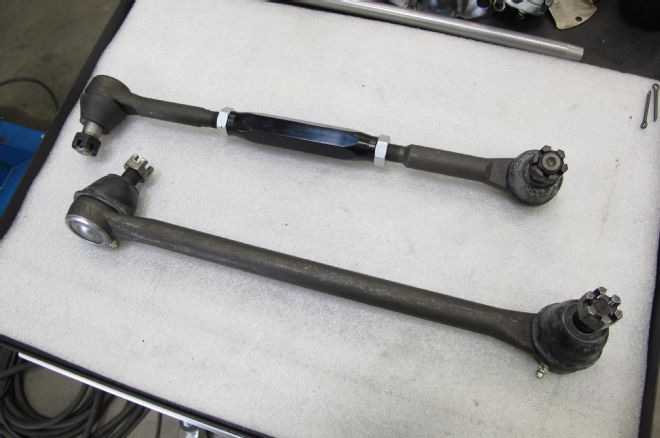
13 CPP offers both a stock replacement drag link (fixed) as well as a custom, adjustable one. In the unlikely event the OE steering linkage is slightly off, the adjustable link will fix that right up.
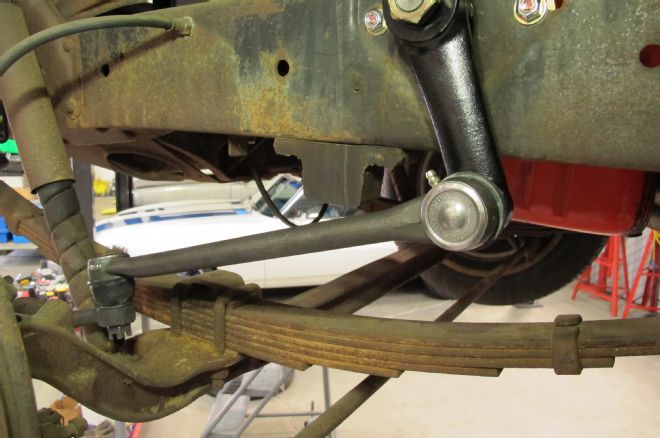
14 We had no fitment issues, and as such, used the OE replacement drag link.
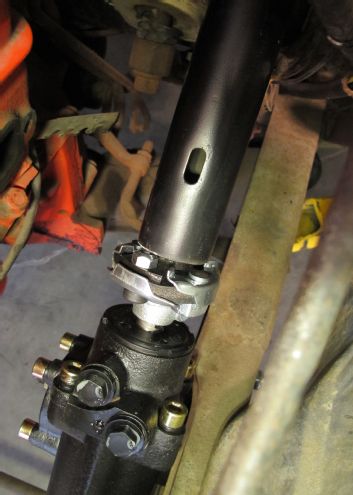
15 Now back to the column mods. With the full-length tube mocked back up in the truck, we need to start taking some numbers. As it "hangs" here, just enough of the bottom portion has been trimmed off to fit with the mini rag joint installed on the box — the top is positioned where it sat (high) originally.
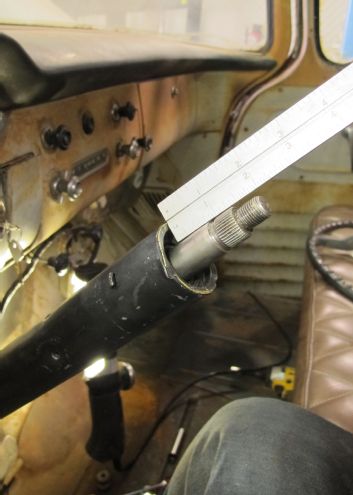
16 Taking into consideration the height of the rag joint (which has been removed here), the actual height we wanted the steering wheel (roughly 3 inches lower), the amount of steering shaft stick-out (2 inches), and between 1/2-3/4-inch gap between the column tube and joint gave us the numbers to start cutting and trimming.
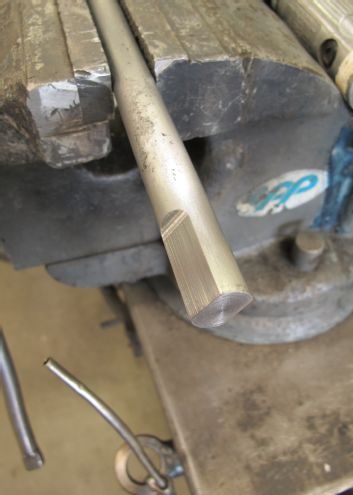

17-18 First to lose some weight is the inner steering shaft—which also needs to be modified to accept the new rag joint. Once cut to length, the end is machined (milled or hand filed/ground) to double-D shape 9/16-inch deep.
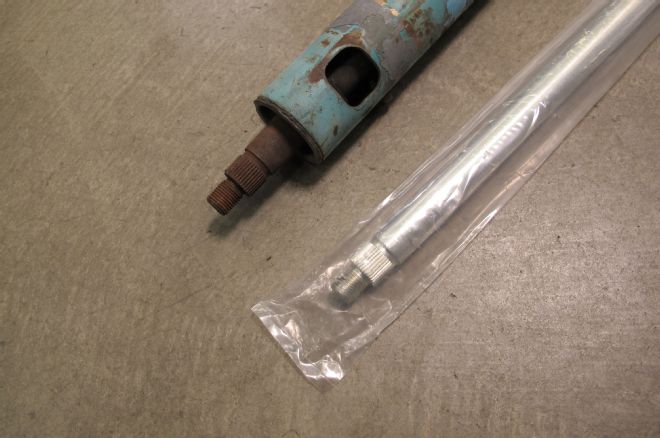
19 If your steering shaft is too worn, splines wasted, what have you, CPP offers replacement inner shafts as well (they too will require the rag joint modification).
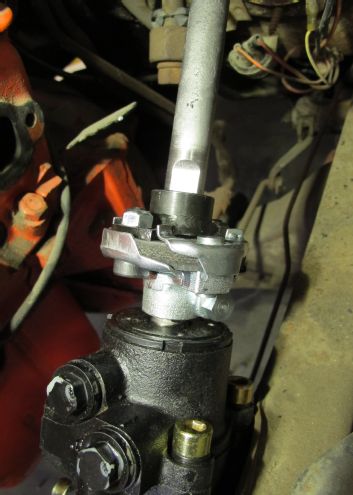
20 The shaft and steering coupler should be a snug fit (not too loose where it's solely relying on the set screw, which you will need to drill a relief hole for once it's all set up).
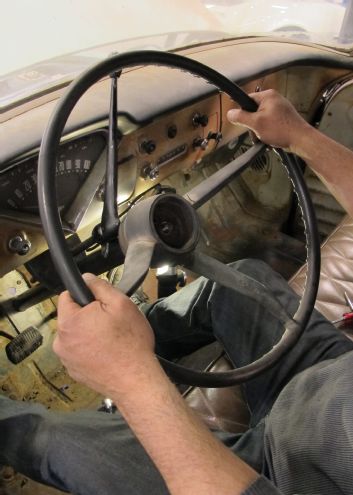
21 With a 2-inch stick-out retained, the steering wheel was test fit to ensure the proper positioning — and so too was the shift lever, which needs to be able to clear the dash during operation.
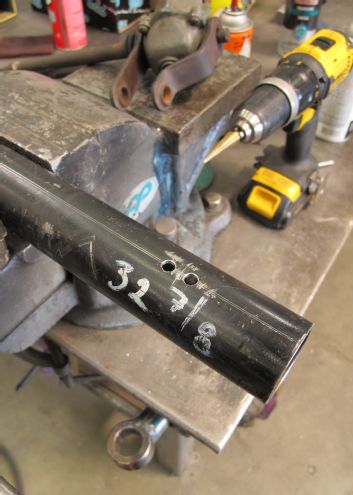
22 Once the shaft and tube were cut down to size and everything fitting inside the cab to our liking, there was still one more thing to address: reintegrating the shift linkage mechanism (the slotted hole that's no longer present located and kept the mechanism from rotating — a new one needs to be added).
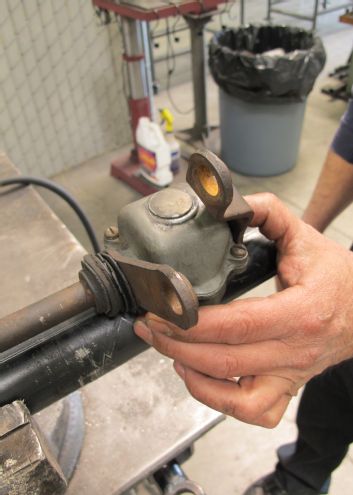
23 With the column in the truck, the linkage needs to be aligned appropriately with the transmission shifter arms, then marked on the column tube for location. Double-check for centering before drilling the tube.

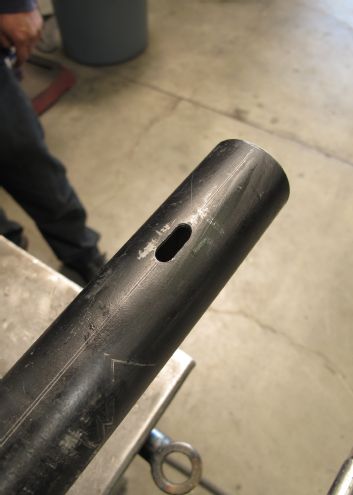
24-25 As with the original, the shortened column will get slotted to allow for fine-tuning adjustment of the shifter.
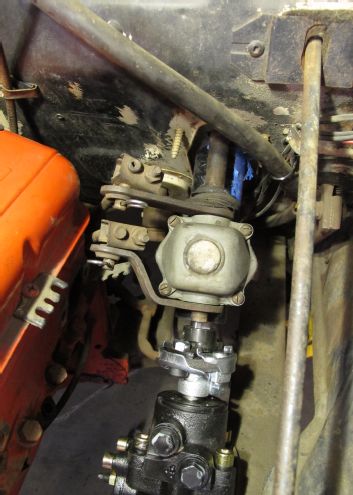
26 To help facilitate smooth operation, the linkage mechanism is thoroughly greased and tightened up; new nylon bushings are installed in the linkage as well.
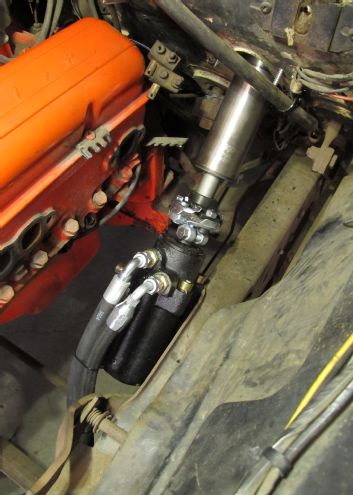
27 The linkage is once again bolted back onto the column and the shifter rod connector sleeve shortened accordingly — ensure full engagement of all gears is achieved before finalizing any shift linkage mods.
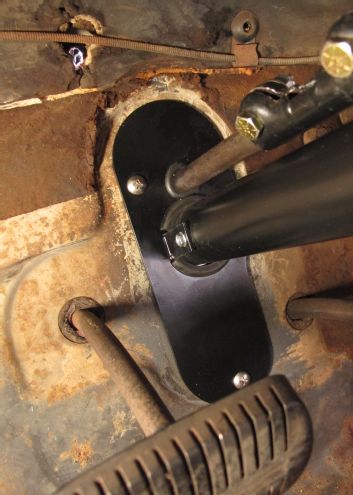
28 With all the mock-up and modification tackled, the new CPP floor plate with integrated mounting tab is installed and secured.

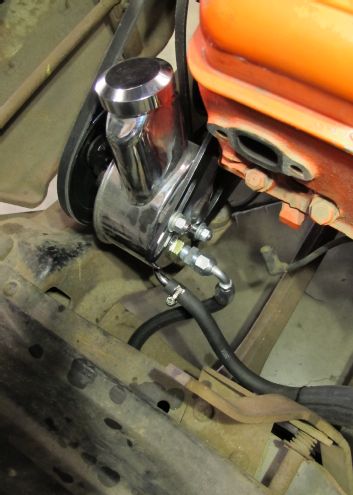
29-30 Lastly, the 400 Series box needs to be fed accordingly — the supplied rubber high-pressure and return lines are hooked up, routed free and clear of any moving/hot objects (namely the E-brake and exhaust) and connected to the power steering pump.
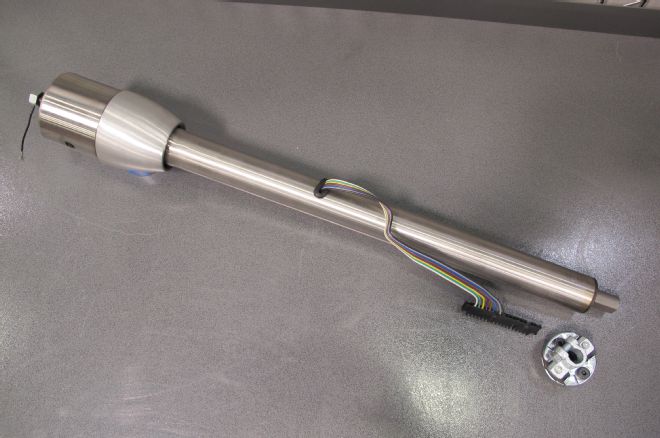
31 You may have noticed the column protruding into the engine compartment in the image before last is not the stock one — that's because we went ahead and test-fit/installed a CPP tilt column to illustrate an (easier) option than modifying the OE unit. Of course, this will eliminate the three-on-the-tree, so a floor shifter must be used in this case.
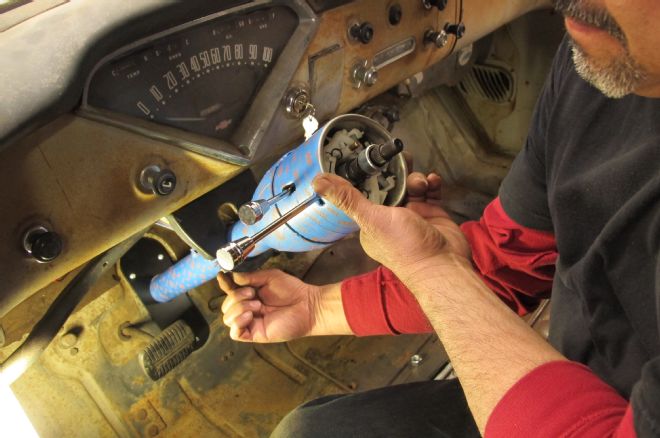
32 Fully taped up to prevent any unnecessary marring or scratching, the 30-inch plain stainless column (TC-30-SB) bolts right up using the factory drop; because it's pre-fitted with a 1-inch DD inner steering shaft, it mates right up to the 400 box with the appropriate mini rag joint.
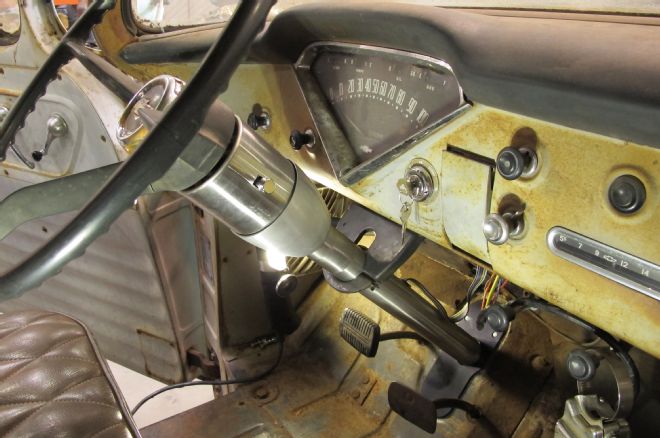
33 And though it's not that complementary in its current condition, the stock '57 steering wheel bolts right on — with full operational horn facilitation.